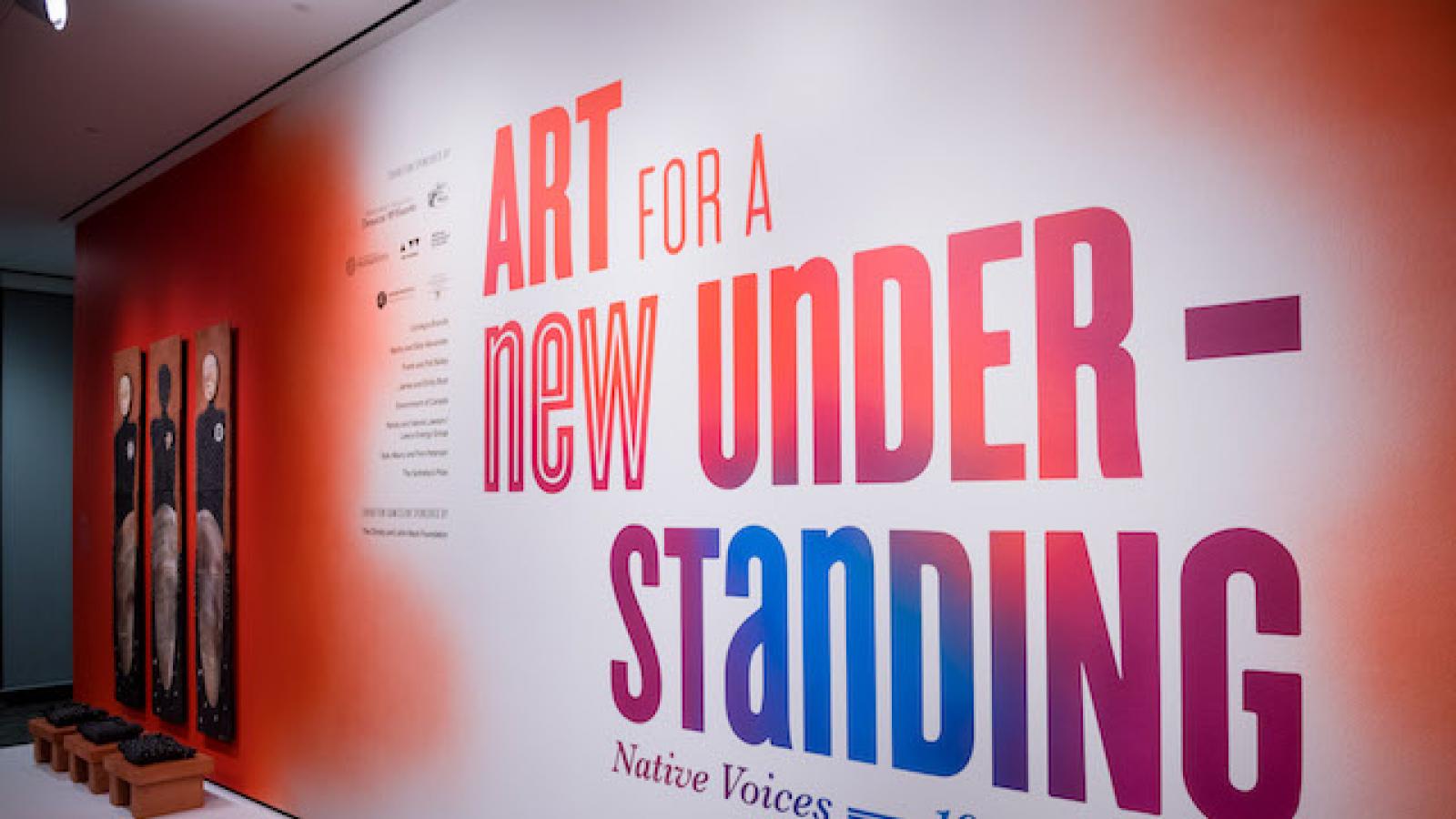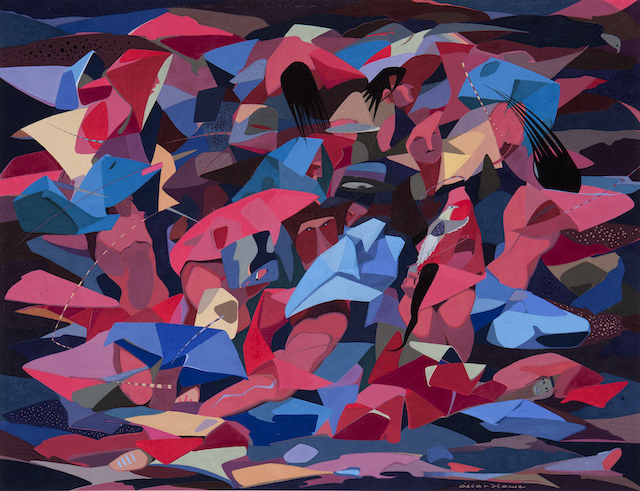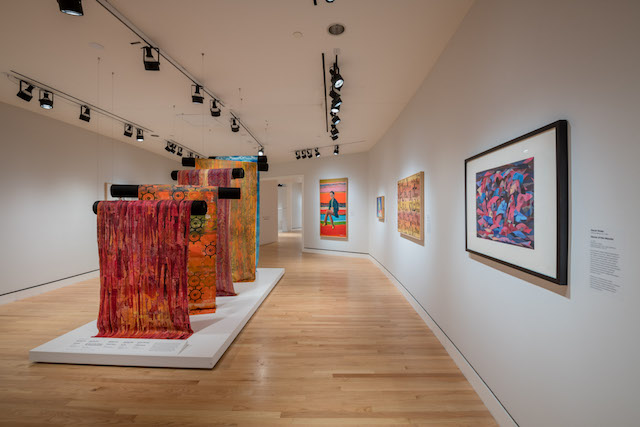Crystal Bridges Turns the Spotlight on Contemporary Indigenous Artists

U.S. museums have only recently started to grapple with the idea that art by Native Americans is, in fact, American art. At Crystal Bridges Museum of Art in Bentonville, Arkansas, however, it’s not a question that’s up for debate. Crystal Bridges Curator Mindy N. Besaw—one of three co-curators of the current exhibit Art for a New Understanding: Native Voices, 1950s to Now—is adamant that the story of American art is incomplete if it doesn't include indigenous voices, a position the museum enthusiastically embraces. Besaw explained, "Crystal Bridges is really dedicated to pushing on those standard boundaries of American art—who is included, who is excluded. We want to… be much more inclusive in the ways that we talk about American stories and American art. There’s a need for an American art museum in that so-called mainstream to be embracing and celebrating and focusing on indigenous artists."

Oscar Howe (Yanktonai Dakota), Dance of the Heyoka, ca. 1954. Watercolor on paper. 20 ¼ x 26 ¼ in.Philbrook Museum of Art, Tulsa, Oklahoma. Museum purchase. 1954.12 © 2018 By permission of the Oscar Howe Family
Featuring 80 art works by 40 Native artists from both the U.S. and Canada, the range of disciplines represented in Art for a New Understanding, which is supported by a National Endowment for the Arts grant, includes graphic art, painting, film and video, conceptual art, performance art, textiles, and more. "We are hoping to show people something unexpected," said Besaw.
Artists include basketmaker Shan Goshorn, who incorporates historical documents in her basketmaking; Spiderwoman Theatre, a trio of sibling performance artists, and Jaune Quick-to-See Smith, a mixed-media sculptor. While the materials and processes differ from artist to artist, the central story of the exhibit remains that Native artists are not "other." Just like non-Native contemporary artists, their work engages with contemporary life, wrestling with issues such as family and community, environmental protection, and the lasting effects of colonization.

Jaune Quick-to-See Smith (Salish and Kootenai), Trade (Gifts for Trading Land with White People), 1992. Oil and mixed media on canvas, 86 x 170 in. Chrystler Museum of Art, Norfolk, VA. Museum purchase in memory of Trinkett Clark, Curator of American and Contemporary Art, 1989-96 93.2 © Jaune Quick-to-See-Smith
To deepen the exhibit's impact, the museum is offering a number of outreach activities, including a film series spotlighting indigenous filmmakers, sewing circles, and lecture and workshop opportunities with artists featured in the show. The goal of these activities, said Besaw, is to reinforce to the community that "these [artists] are living people among us…. The other thing I would hope is that someone walks away and says, 'I didn't understand how much variety was within a culture that oftentimes gets lumped as if it's one single thing, a Native American culture. But it's made up of individuals from so many different backgrounds, members of so many different tribes and communities that it's really richly varied.'"
On view at Crystal Bridges through January 7, 2019, the show will also travel to sites in New Mexico, North Carolina, and Tennessee. For Crystal Bridges, however, Art for a New Understanding is just the beginning of a deepening relationship with work by indigenous artists that will continue long after the show closes.

An installation view of Art for a New Understanding: Native Voices, 1950s to Now. Photo courtes of Crystal Bridges American Art Museum
For one thing, going forward all Crystal Bridges didactic and promotional materials will include a "land acknowledgement," which is the practice of naming and acknowledging the specific Native tribes who have inhabited a particular area. As Besaw explained, "We’re really hoping that by setting the stage by starting with a land acknowledgment, it also starts to help people see things from multiple perspectives just right off the bat."
In addition, as the museum plans future exhibits, work by indigenous artists will be included whenever possible. "By highlighting [indigenous artists in this show], the work becomes part of the fabric of our being," said Besaw. "From here on out, if we do an exhibition of contemporary art that might be responding to the theme of anything, fill in the blank, indigenous artists will be included along with artists from all backgrounds."







